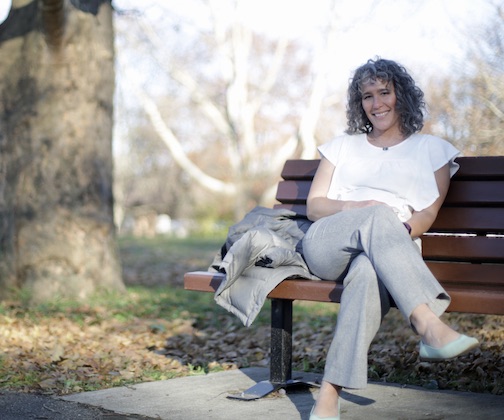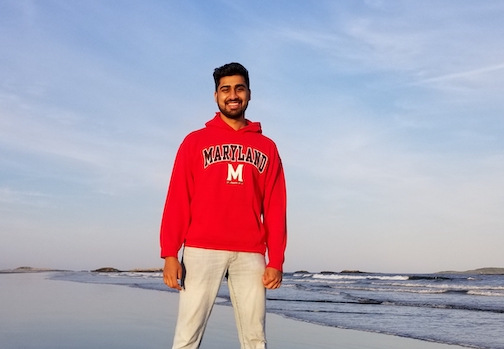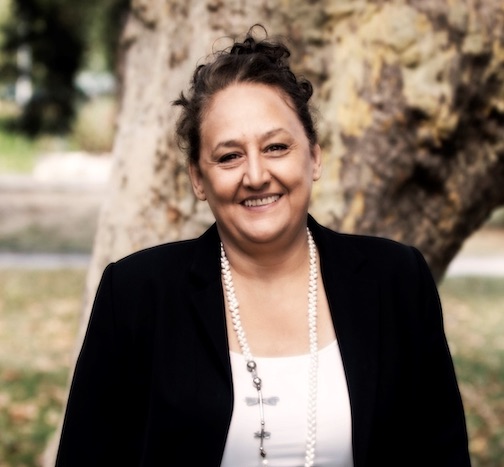My first morning in Mexico was memorable. My first morning in Mexico found me crouched before a sculpted wooden toilet seat in someone's sculpted underground home wearing a sculpted white canvas tunic, and vomiting. I was that day modeling in a shoot for Vogue Mexico, and our location was the Mexican architect Javier Senosiain's Casa Orgánica, located ironically on an artificially fabricated green hill on the outskirts of Mexico City. I was struck by the fact that this hill, under which the house wound its tunnels like so many hollow plaster tentacles, was covered in actual living grass, mowed less than an inch short. I was struck by the view of the city from here, pink and smoggy down the slope. I was struck by how difficult it was to run through the halls of this house due to their slippery carpeting and the fact that no surface, on floor or wall or otherwise, was even slightly flat. Unfortunately, I was also struck by my Mystery Bug—and run through the halls is what I was repeatedly compelled to do, in quest of the conceptual wooden restroom.
The Mystery Bug was a migraine attack. I know that now, nearly four years after the malady started to plague me sometime over the summer of 2015. But for the greater portion of those years I was at a loss to identify the sporadic symptoms I suffered, as were all my doctors, too. The attacks came every few weeks and always unpredictably; sometimes the interims between bouts was a matter of days, sometimes of whole months. An attack of the Mystery Bug always began with the same telltale indications: I'd note a tenderness about my neck and the base of my head, sense a weariness of holding my skull up and an overwhelming urge to lie down on my back. Slowly a dull ache would creep, usually overnight, up from my neck into my head and penetrate my entire skull, so that when I woke in the morning it would hurt to open my eyes to the light, to hear loud noises, to sit up. Often, though, I had no choice but to do these things—just hopefully not in a foreign country, like Mexico, and hopefully not on the day of an important shoot, like one for Vogue.
As a model, my job requires me to travel frequently through disparate time zones and climates, and at first I pinned my headaches on changes in air pressure or sleep schedule, on stress, on flying. My inexplicable and infuriating malady caused me to cancel plenty of desirable jobs, like J Crew one morning in New York, and to stagger through jobs I simply couldn't cancel: jobs for which a client flew me across a continent and paid to lodge me in one of the nicest hotels in Mexico City, for example, with a pool and a breakfast buffet featuring squash blossom quesadillas and fried plantain stuffed with pineapple chutney. There was obviously no canceling here. There was only not eating and not drinking, abstaining from tasting the fried plantain (tragic I know) and even from drinking water in hopes that an empty belly would preclude regurgitation. For the headache was merely the beginning of my migraine attack. What made these bouts so debilitating, and so confusing to me, was the phase that followed the headache: nausea.
Whether or not I ate or drank anything once the headache commenced, I would begin to feel overpoweringly queasy a few hours after my headache set in, and soon start throwing up, even if I had little in my stomach to expel. Usually I would vomit one to four times before the bout was over. Usually the bout would only be over once I'd slept for three or four hours. Sleeping, in fact, seemed to me the only way I could escape, and the only way I could terminate, these attacks. But at work there was of course no sleeping. Within the first hours of that Mexico shoot it became evident that the bug intended to run its course and would let nothing stop it—not fasting all morning, not a crew of twenty strangers depending on me, scrutinizing me, dressing me, photographing me, making me up and and remaking me up after I returned greenish from the bathroom.
It was not a sustainable routine. Back home in suburban New York I began scavenging for explanations, embarking on a long and halting and frankly rather soporific chain of doctors visits and referrals and experiments. My pediatrician at the time thought my attacks could be the manifestations of a late-blooming allergy to some food group: she put me on a dairy free diet for three months to see if dairy was the source of the malady. During those three months, I only had one attack. But when I recommenced, after three months, to eat dairy I still didn't get any headaches for the rest of the summer; I concluded dairy wasn't the primary catalyst. A chiropractor worked on loosening densifications in the layers of facia encasing my neck muscles; densifications, he said, like scar tissue, can grow out of bad posture or muscle strain and can come to aggravate the pain nerves that trigger headaches. This seemed like a promising lead to follow, but after a year of bimonthly facia manipulation I was still getting headaches and still throwing up. A neurologist looked me over and found nothing amiss. He told me my condition was vague and gave me a prescription for Imitrex, in case what I had was migraines. “Just take one of these if you feel 'off'.” he said. “The nurse will walk you out.”
I didn't call in the prescription. I racked up high bills at functional medicine practitioners my insurance didn't cover. These doctors weren't able to help either: they injected me with vitamin B, sent me home with Fever Few, Melissengeist, Bu Xue Tiao Jing Wan. Nothing helped. I sort of lost interest, gave up.
It was from that quarter out of which I least expected medical insight that I finally retrieved my answer. One afternoon in Fast Ashley's photo studio in Brooklyn, on set for Nordstrom, a stylist from Seattle explained to me why she was in despair over the weather forecast: thunderstorms were predicted for the following day, and she said changes in atmospheric pressure set off her migraines. My curiosity was piqued, and I listened raptly as she proceeded to explain that she suffered severe headaches and nausea in climates of high humidity, during storms and shifts in temperature. She also travelled often for photoshoots, and she regulated her migraine attacks with a precise balance of vitamin supplements and cannabis capsules. She gave me for future sampling one of her small, tawny colored CBD capsules. CBD of course is the non-psychoactive cannabinoid in marijuana; it looked to me to be filled with sand. She showed me the app (“migraine coach”) that tracked her particular risk factors for migraine onset and indicated which days she was likely to suffer an attack. I heard my symptoms echoed in her descriptions, saw my struggle reflected in her account. Could I have finally hit the nail on the head? After all the medical professionals I'd consulted, could I have received my diagnosis, and my panacea, from a colleague in the fashion industry?
It seemed I had. A week later, Ralee emailed me a compendium of her migraine management medications. Her information was more thorough and well researched, more personalized and applicable, than any recommendations I'd gotten from the specialists I'd seen:
The supplements I take are 400 mg of Riboflavin, 300 mg of COQ10, Magnesium- 400 mg (magnesium is harder as there are many different kinds and formulation, but my Naturopath recently started me on “Optimag Neuro”)... As for the cannabis I take a daily dose of “concentrate” which is a very concentrated form of CBD/THC in a syringe. I take a tiny dose- the size of a grain of rice. And when I get a migraine I up my dose and I take the pills- some are CBD only… and the others also have small amounts of THC… I've found that the two together can knock out a migraine quicker sometimes, but not always… Sometimes nothing helps.
CBD is great but it can be complicated and many formulations out there aren't worth the money. The ones I gave you are from Mary's Medicinals... The website is: marysmedicinals.com. If you chose to get a medical card I am sure you could find Mary's at a dispensary, they are a popular brand. The ones I buy are 20 mg of CBD in each pill, and they also come in 10 mg doses. For a MONSTER migraine I can sometimes take upwards of 200-300 mg of CBD a day… However, I've also found that if I take 20 or 40 mg at the start of a migraine it will often keep it from getting worse or just stop it completely. It all depends on the day.<
This last piece of the stylist's advice, perhaps, is what has helped me most to manage my own migraines ever since. For me, taking a preventative palliative at the onset of a migraine is the single simplest secret to staying off the bathroom floor. My palliative of choice is Alleve, a basic painkiller widely available over-the-counter. When I feel the tendrils of tension in my neck, I take one Alleve tablet and within three or four hours will feel relatively normal once more.
Validation for this practice reached me in a New York Times article one day last September. The op-ed, “Giving Migraine Treatments the Best Chance”, elaborates a useful profile of the condition, and laments its under-researched state: “Despite being the seventh leading cause of time spent disabled worldwide, migraine 'has received relatively little attention as a major public health issue'”. The article urges patients to identify the “warning signs of a migraine in its so-called prodromal phase” and to start treatment immediately before the pain sets in.
Knowing this simple trick would have been useful when I was in the Casa Orgánica with Vogue Mexico. Knowing this simple trick would have been useful when I gave up precious opportunities with other brands because I couldn't get out of bed. But I have led a nearly migraine-free existence ever since one stylist intervened to help me, and I still can't really believe my luck. In the end, it was elements of my daily life—my colleagues, my morning paper—that came to restore daily calm to me. In the end, it was only connecting that mattered.
More Stories from Kinnected

At times, it has been really frustrating to be a strategist and health communication professional and witness the lack of strategic planning and messaging that we have over the last two years.
-
3 years ago

"What many people miss is that emotional exhaustion among clinicians existed long before the pandemic."
-
3 years ago

"A lot of people argue whether technology is good for the future of humanity or bad. In my opinion, it is both - just as an herb could be a poison or a medicine."
-
4 years ago

